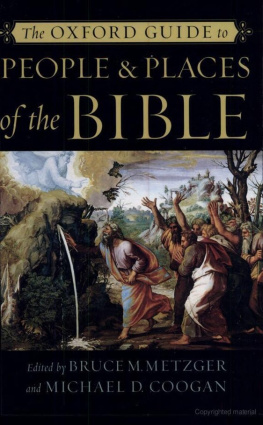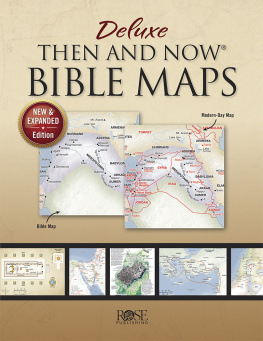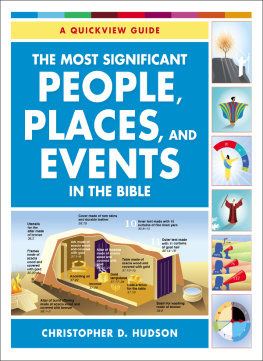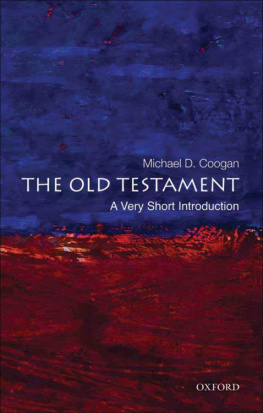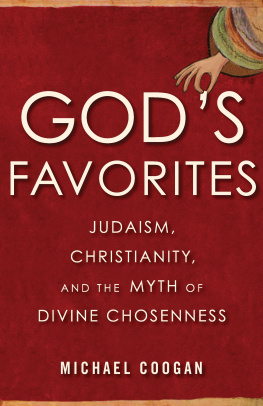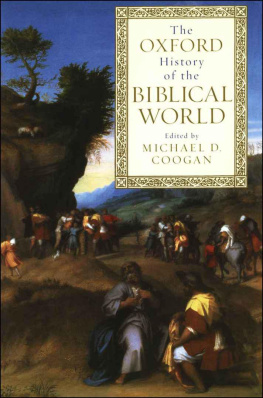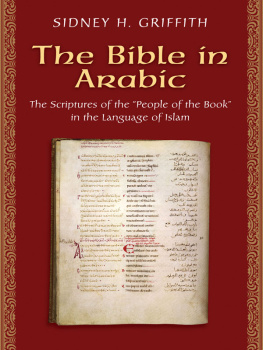

The Oxford Guide to
PEOPLE & PLACES
OF THE BIBLE
The Oxford Guide to
PEOPLE & PLACES
OF THE BIBLE
Edited by
BRUCE M. METZGER
MICHAEL D. COOGAN






CONTENTS
vii
xi
xvii
xxi
The Oxford Guide to People & Places of the Bible
ACKNOWLEDGMENTS
In preparing this Guide we have had indispensable assistance from the staff of the trade reference department at Oxford University Press. We especially thank Katherine Adzima, who guided the Guide from idea through production. We are most grateful, of course, to the contributors, whose expert contributions are the essence of the volume; their names are listed after this introduction.
Bruce M. Metzger
Michael D. Coogan
September 2000
INTRODUCTION
For nearly two millennia, the Bible has been the cardinal text for Judaism and Christianity. Its stories and characters are part of both the repertoire of Western literature and the vocabulary of educated women and men. It is, however, more than a collection of ancient tales. Even before a canonical list of books considered sacred scripture or holy writ was established, the writings we now call the Bible were considered normative: they laid down the essential principles of how human beings should deal with God and with each other. The practice of quoting from, and alluding to, earlier texts as authoritative is found within the Bible itself and has continued unabated in subsequent Jewish and Christian writings. At the same time, the Bible has also been formative; subsequent generations of believers have seen themselves as descended from, and in continuity with, those to whom God had spoken and for whom he had acted definitively in the past, and the recital of those words and events has been instrumental in shaping the religious communities of succeeding generations. The Bible has thus had an immeasurable influence on Judaism and Christianity, on the cultures of which they have formed a part, and on all those traditions in some ways derived from them, such as Islam.Although the word Bible means "book," and the Bible has been treatedas a single book for much of its history, it is in fact many books, an anthology of the literatures of ancient Israel, and, for Christians, also of earliest Christianity. The Bible thus speaks with many voices, and, from the time of its emergence as an authoritative sacred text, readers and interpreters have noted its many repetitions, inconsistencies, and contradictions. Since the Enlightenment especially, critical consideration of the Bible-that is, study of it insofar as possible without presuppositions-has irreversibly affected what may be called the "precritical" understanding of the Bible as simply a unified text, God's eternal, infallible, and complete word. Discoveries of ancient manuscripts (such as the Dead Sea Scrolls) and of literatures contemporaneous with, or earlier than, those preserved in the Bible (such as stories of creation and the Flood from ancient Babylonia and the gospels of Thomas and Philip from Nag Hammadi in Egypt), as well as innumerable archaeological finds, have deepened our understanding of the Bible and the historical and cultural contexts in which its constituent parts were written. This new understanding of the Bible has resulted in continuous scholarly attention and popular interest.The Oxford Guide to People & Places of the Bible is derived from The Oxford Companion to the Bible (1993). We have selected entries from the original work to provide an authoritative reference to key persons and places of biblical times. The Guide provides up-to-date discussions of the interpretation of these topics by modern scholars, bringing to bear the most recent findings of archaeologists and current research methods from such disciplines as anthropology, sociology, and literary criti- cisin. Like the Companion, the Guide is consciously pluralistic, and its contributors encompass a wide spectrum of intellectual and creedal perspectives. They represent the international community of scholars, coining from some dozen countries, on five continents. No attempt has been made by the editors to produce any dogmatic unanimity; readers should not be surprised to find differing interpretations in different entries. Contributors have been urged to present their own scholarly views while noting diverse perspectives. In general, the articles aim to present the consensus of interpretation, or the lack thereof, attained by the most recent scholarship, and to avoid partisanship and polemic.In preparing the Guide, we have occasionally linked entries that were separate in the Companion. This can result in the inclusion under one major heading of contributors who have different views on related subjects. We have chosen to let this stand, just as we have not attempted to impose consistency between entries. Diversity of views will inform readers' understanding both of the issues involved and of the process of interpretation itself.The Guide does not aim to be an encyclopedia or encyclopedic dictionary, and is not intended as a substitute either for the Bible itself or for a concordance to the Bible. Quotations from the Bible have deliberately been kept to a minimum, and biblical references are illustrative, not exhaustive. Nor have we included every name found in the Bible; rather, we have chosen only those judged important within the biblical traditions or by later readers. This is especially true of persons and places about which little if anything is known other than what appears in the Bible.Within the scope of one volume, then, from Aaron to Zion, the Guide is a reliable resource for what the Bible says and how scholars have interpreted biblical traditions. The Guide is an authoritative and comprehensive reference for a wide audience, including general readers; students and teachers in high schools, colleges, seminaries, and divinity schools; rabbis, ministers, and religious educators; participants in religious education and Bible study programs; and scholars in the variety of disciplines for which the Bible is in some way pertinent. Use of the Guide Cross-references. The Guide is arranged alphabetically. Extensive crossreferences direct the reader to related entries; these cross-references are of three types:1. Within an entry, the first occurrence of a name, word, or phrase that has its own entry is marked with an asterisk (*).2. When a topic treated in an entry or a related topic is discussed elsewhere in the volume, the italicized words see or see also refer the reader to the appropriate entry term(s).3. "Blind entries," that is, entry terms that have no accompanying text but are terms that readers might expect to find discussed, appear alphabetically in the volume and refer to the entries where the top ics are actually treated. Thus, the blind entry Peter refers readers to Simon Peter.Index. Further investigation of particular topics is made possible by a detailed index, which provides page references for pertinent subjects and for ancient and modern proper names. There is also a set of maps at the end of the Guide. These maps have their own index, to enable readers to locate places named in the text more precisely.Bibliography. At the end of the volume, there is an extensive annotated bibliography, which will enable readers to explore in more detail topics covered in the Guide. The bibliography is divided into categories for easier use, such as the history, geography, and archaeology of biblical times; anthologies of nonbiblical texts; critical and popularintroductions to the Bible; reference works; surveys of the history of interpretation; and methodologies used in biblical scholarship.Translation. The translation used in the Guide is The New Revised Standard Version (NRSV), the most recent authoritative translation of the Bible into English, produced by an interfaith committee of scholars and published in 1990. The renderings of the NRSV are the basis for entry titles. Within individual entries, contributors have on occasion used other published translations or their own; in these cases, differences from the NRSV are noted.Following increasingly frequent practice, the term "Hebrew Bible" is used in preference to "Old Testament," and the abbreviations BCE (Before the Common Era) and CE (Conunon Era) are used in place of BC and AD.
Next page
